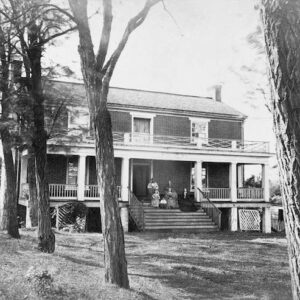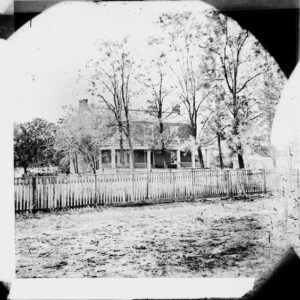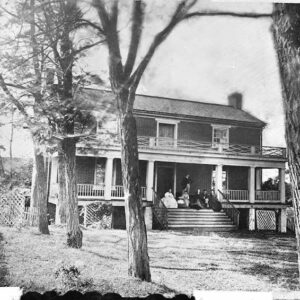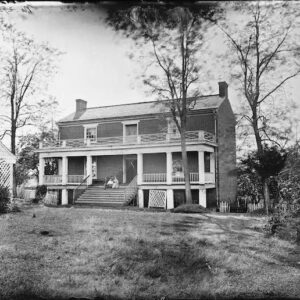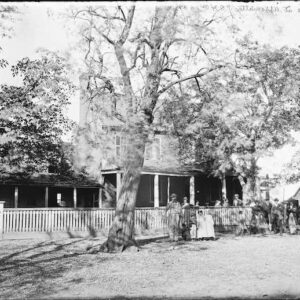Tag: Appomattox Court House VA
Wikipedia says: The Appomattox Court House National Historical Park is a preserved 19th-century village in Appomattox County, Virginia. The village is famous for the site of the Battle of Appomattox Court House, and contains the house of Wilmer McLean, where the surrender of the Army of Northern Virginia under Robert E. Lee to Union commander Ulysses S. Grant took place on April 9, 1865, effectively ending the American Civil War. The McLean House was the site of the surrender conference, but the village itself is named for the presence nearby of what is now preserved as the Old Appomattox Court House.
The antebellum village started out as “Clover Hill” named after its oldest existing structure, the Clover Hill Tavern (c. 1819). The village was a stagecoach stop along the Richmond-Lynchburg stage road. The activity in Clover Hill centered around Clover Hill Tavern. The tavern provided lodging to travelers. Fresh horses for the stage line were also provided at the stop, which had been done since the tavern was built. It was also the site of organizational meetings, so when Appomattox County was established by an Act on February 8, 1845, Clover Hill village became the county seat. Appomattox County was formed from parts of Buckingham, Prince Edward, Charlotte, and Campbell counties. The jurisdiction took its name from the headwaters that emanate there, the Appomattox River. Early Virginians believed the name Appomattox came from an Indian tribe called Apumetec.
From about 1842, Hugh Raine owned most of the Clover Hill area. He obtained it from his brother John Raine who defaulted on his loans. Later, he sold the property to Colonel Samuel D. McDearmon. Since his acquisition, it became the county seat and he surveyed 30 acres (12 ha) of the hamlet. He designated 2 acres (0.81 ha) to be used by the new county to build a courthouse and other government buildings. The courthouse was to be built across the Stage Road from the Clover Hill Tavern. The jail was to be built behind the courthouse. McDearmon divided the remaining land surrounding the courthouse into 1-acre (0.40 ha) lots. He felt that with Clover Hill’s new status as a county seat he would find professional people ready and willing to purchase the lots. His hopes were later dashed in 1854 as the train depot stopped three miles (5 km) west in Appomattox, Virginia. The American Civil War put the final nails in the coffin. The district once known as Clover Hill and later renamed to Appomattox Court House continued to decline as businesses moved to the area of the Appomattox Station.
The village contained 30 acres (12 ha) of the original Patteson’s Clover Hill Tavern property of some 200 acres (81 ha). Raine provided the Clover Hill Tavern for meeting space for the organization of the new county in May 1845 and naming the township “Clover Hill.”
The county records show:
“And be it further enacted, that not exceeding thirthy acres of land, now occupied by Captain John Raine, in the now county of Prince Edward, lying on the stage road leading from or through said county to the town of Lynchburg, at the place called and known as Clover Hill, the proposed seat of justice for the said new county, so soon as the same shall be laid off into lots, with convenient streets and alleys, with back and cross streets if necessary, shall be and the same is hereby established a town by the name of Clover Hill.”
Appomattox Court House village
The Battle of Appomattox Court House fought on the morning of April 9, 1865, was the final engagement of Confederate General in Chief, Robert E. Lee, and his Army of Northern Virginia before it surrendered to the Union Army of the Potomac under the Commanding General of the United States, Ulysses S. Grant. General George Armstrong Custer of Little Bighorn fame received a flag of truce at the village of Appomattox Court House that brought about the discontinuance of hostilities of the Confederate and the Union armies leading to the surrender meeting between General Lee and General Grant at the McLean House.
According to a Union writer at the time of the American Civil War the village consisted of about “five houses, a tavern, and a courthouse — all on one street that was boarded up at one end to keep the cows out.” There were actually more dwellings in this obscure hamlet, some of which were off the main village street. There were a large number of cabins and out-buildings. The hamlet had two stores, law offices, a saddler, wheelwright, three blacksmiths, and other businesses. A tavern had been built by John Raine in 1848 that became the celebrated McLean house. Many rural counties in the Southern States had county seats whose names were formed by adding court house (two words) to the name of the county, hence the village name became Appomattox Court House.
